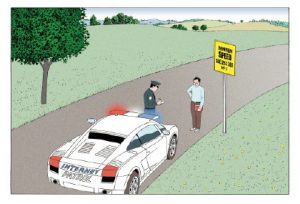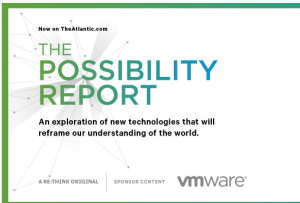(Ashlyn Weisgerber, Shannon Mcnulty, Abdul Ogembe, James Hartner)
Introduction
Become your inner Sherlock Holmes today!
Our product is a forensic science virtual reality app. This app will give the users a sense of what a crime scene is like and they’ll be able to practice what to do at a crime scene. This app will help those who would like to pursue a career in forensic science. They will be able to get the practice needed to know the basics of crime scene investigation and get the some experience. Jobs in this field like and look for those who have experience in this job. Having this slight experience of a virtual reality app will help people get a job in this field. Professors who teach this subject in college could really use this for their students. Right now, the courts are trying to get virtual reality in there to use for the jurors and for everyone else in the courtroom as well. They will be able to see the crime scene and get a visual of the crime while it was happening to get a sense of the case. There is also a college that has started talking about making an app for forensic science classes.
Learning Outcomes
The objectives for this simulation academically would be to improve one’s skills in the area of forensic science as they continue to learn the skills needed for the job. It would provide instructors the ability to show their students a real life simulation in an environment where there is room for mistakes. This simulation would significantly increase the necessary skills needed for properly assessing crime scenes and allow students to come into the field very prepared and ready for real life experience. This specifically applies to crime scenes and the skills when trying to discover clues and investigate a scene.
The application relates to education as it should be used within schools, specifically colleges, with students in the major of forensic science or criminal justice. It should be used after students have the requisite courses, necessary skills and are pursuing higher level courses that relate previously learned skills into real life experience. This simulation can either be used for practice or professors may choose to use this simulation as an assessment. If used for an assessment, at the end of the simulation a score will be present explaining how well you did in the simulation which would allow professors to grade their students on how well they have applied their skills in the field to a real life experience. However, in this type of situation mistakes are acceptable as it is just a simulation, this allows students less stress as they will be able to get the full experience while they are still learning.
User Experience/ User Interface
The materials/ technologies that we will use is the HTC Vive, which is a virtual reality headset. Virtual Reality crept back up into the public in 2012 after being dormant for so long. Over the course of the next five years, Valve and HTC were joining forces to create the ultimate product. Beginning in 2012, Valve set its mission to create prototype. Valves prototype created a, “low-persistence display was a must. In this case, that meant lighting up a panel for one millisecond and then turning it off for nine milliseconds, in order to prevent ghosting (Souppouris).” In 2013, HTC created a periscope-like Re Camera, which is a mobile camera that does not need a smartphone to use. Soon, The HTC Vive was born.
The HTC Vive has a life like accuracy while in the virtual world is built down to a science. How this thing works is with a few main components like the grid, the angle, the boundaries, the controllers, and the ‘lighthouse.’ The Grid is what the user’s range is, which has a maximum of fifteen feet. The user must stay in this area while playing the HTC Vive at all times to ensure safety and playability. The Angle tracks the user and their motions while wearing the headset. The stations that track every move have to be above the user’s height to effectively work. The stations also need to be faced down at a 30 to 45 degree angle. The boundaries can be in a shape not necessarily to a square as the system can work in any kind of oddly shaped room to your desire. The controllers will be able to communicate with the lighthouse boxes, as the lighthouse boxes uses non-visible light to find the objects rather than using a camera. The HTC Vive also has a ‘sweep’ mechanism which will basically ‘sweep’ the area to detect any other people other than the user on the headset. This will help the safety of playing a game on this. Last, the HTC Vive features a ‘chaperone’ system that will help you or any other user not bump into anything while wearing the headset (Peppiat).
Implementation Strategy
When it comes to selling this product, we feel that this simulation will be very successful as there is limited access to crime scene and forensic science virtual reality simulations. We plan on advertising primarily to colleges and institutions who are training their students for careers in crime scene investigations. Since our target audience is colleges and institutions we plan to have our simulation on the HTC vive as it allows precise measurements and a more interactive experience than an app using google cardboard. Therefore, colleges have the money to afford the HTC Vive and would be purchase both the equipment and our simulation. It could potentially be a huge selling point for an institutions forensic science program as it allows students hands on experience before they enter their chosen career field.
There are currently no virtual reality simulations on the market right now but there is various proposed simulations on the internet. Many of the simulations that are proposed are primarily for reviewing or reliving crime scenes in a courtroom during a trial, which is very different from our approach (Hamzelou). A similar virtual reality simulation we found during our research was one proposed by the nonprofit National Forensic Science Technology Center who partnered with University of Tennessee to create a simulation to train state and local law enforcement officers in crime scene training for those entering the field or anyone who may wish to refresh their skills (Kanable). This is very similar to our simulation, except our simulation is looking to seek out a different audience as we are trying to persuade colleges and institutions to purchase our product rather than training facilities. When researching, we found this program was for those already working for a law enforcement program or those looking to complete a simple training program. Our simulation is for those who already have learned the needed skills and have taken prerequisite courses and need hands on experience before entering the field.
As technology rapidly increases, more people are relying on it. As students move into college they are introduced to new technology that incorporates learning, therefore this simulation will fit into the curriculum and style of learning that students are already using. Technology has come a long way over the years and now students have hands on ways of learning through technology and this simulation is a perfect simulation for forensic science students to use.
We plan to reach our customers, who are primarily institutions and colleges, by going around to those schools that offer forensic science as a major and advertising our product to their deans. We feel this will be the most effective method as we can provide an in depth presentation as well as a trailer of our simulation which will grab their attention. We also will send out pamphlets to schools who could potentially be interested, therefore those schools who offer a forensic science major to their students. We feel that these techniques will be very effective and will grasp the attention of our audience best. We do not feel that we will have a problem selling this product as it is a very important simulation needed for learning before entering the career field.
Long-Term Vision
Most people who go into forensic science start out in crime scene investigation. So, for those who are going into forensic science, the demo is going to be focused on main parts of crime scene investigation that most people will have to know. This includes gathering evidence, photography and measurements. You’ll show up to the crime scene and find all the evidence, take measurements when needed and then photograph the crime scene and all the evidence separately. This will show the basics of forensic crime scene investigation in which people will be prepared for what the job entails. The next phase of development will start introducing different disciplines of forensic science. These disciplines include chemistry and biology to start. These will be more interactive and more school oriented. In 5 years we hope to have more disciplines; blood spatter, toxicology, documentation, etc. This will be more for people to try out different disciplines to practice and see what they like if they want to venture off into something else.
Conclusion
Using this application will give college students and trainees in the field a better understanding of how crime scenes can develop and make them better prepared when they encounter a real one. Crime scenes are in a way a work of brutal art that only people with keen eye can decipher the hidden message in it. Our app will make it easier for students to put themselves in the crime scene and be able to see all the hidden clues inside them. Without any virtual reality simulations like this aimed at college students, this could be the app that could open the floodgates to a very profitable market. Of course, our idea is slightly limited because we want to have the best available one in the quickest time. Having fewer disciplines to start should let us do more with each discipline. We feel that expanding in the future would be better than having everything on release. Our product can help cultivate the next generation of great forensic scientists.
PREZI– https://prezi.com/21afqtse1nww/edit/#65_45341393
Works Cited
Bixby, Jill. “Virtopsy–A New Innovation for Forensic Science.” On the Edge, vol. 16, no. 3, Fall2010, p. 1. EBSCOhost, ezproxy.stevenson.edu/login?url=http://search.ebscohost.com/login.aspx?direct=true&db=edo&AN=55202498&site=eds-live&scope=site.
“Forensic Sciences.” National Institute of Justice, www.nij.gov/topics/forensics/Pages/welcome.aspx.
Hamzelou, Jessica. “Virtual Reality Puts Jury in Crime Scene.” New Scientist, vol. 225, no. 3003, 10 Jan. 2015, p. 1. EBSCOhost, ezproxy.stevenson.edu/login?url=http://search.ebscohost.com/login.aspx?direct=true&db=a9h&AN=100371321&site=eds-live&scope=site.
Kanable, Rebecca. “Virtual Reality: A Reality for Crime Scene Training.” Law Enforcement Technology, vol. 39, no. 11, Nov. 2012, p. 8. EBSCOhost, ezproxy.stevenson.edu/login?url=http://search.ebscohost.com/login.aspx?direct=true&db=edo&AN=83823132&site=eds-live&scope=site
Ma, Minhua, et al. “Virtual Reality and 3D Animation in Forensic Visualization.” Journal of Forensic Sciences, vol. 55, no. 5, Sept. 2010, pp. 1227-1231. EBSCOhost, doi:10.1111/j.1556-4029.2010.01453.x.
Peppiatt, Dom. “Here’s EXACTLY How The HTC Vive Works.” SciFiNow, 1 Jan. 2015, www.gadgetdaily.xyz/heres-exactly-how-the-htc-vive-works/.
Souppouris, Aaron. “How HTC and Valve Built the Vive.” Engadget, 14 July 2016, www.engadget.com/2016/03/18/htc-vive-an-oral-history/.
“Virtual Reality: A Reality for Crime Scene Training.” Officer, www.officer.com/command-hq/technology/computers-software/article/10812441/virtual-reality-a-reality-for-crime-scene-training.











